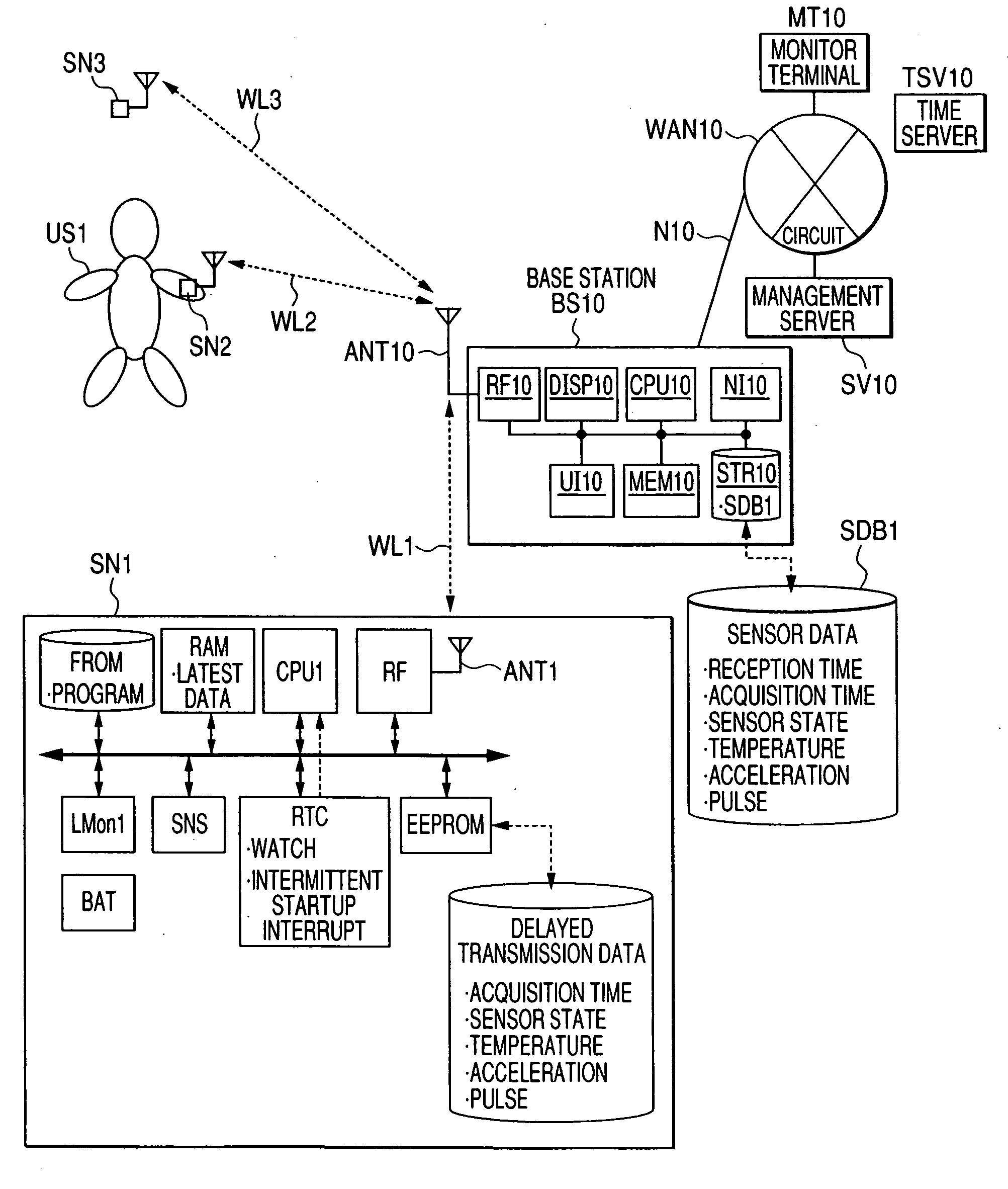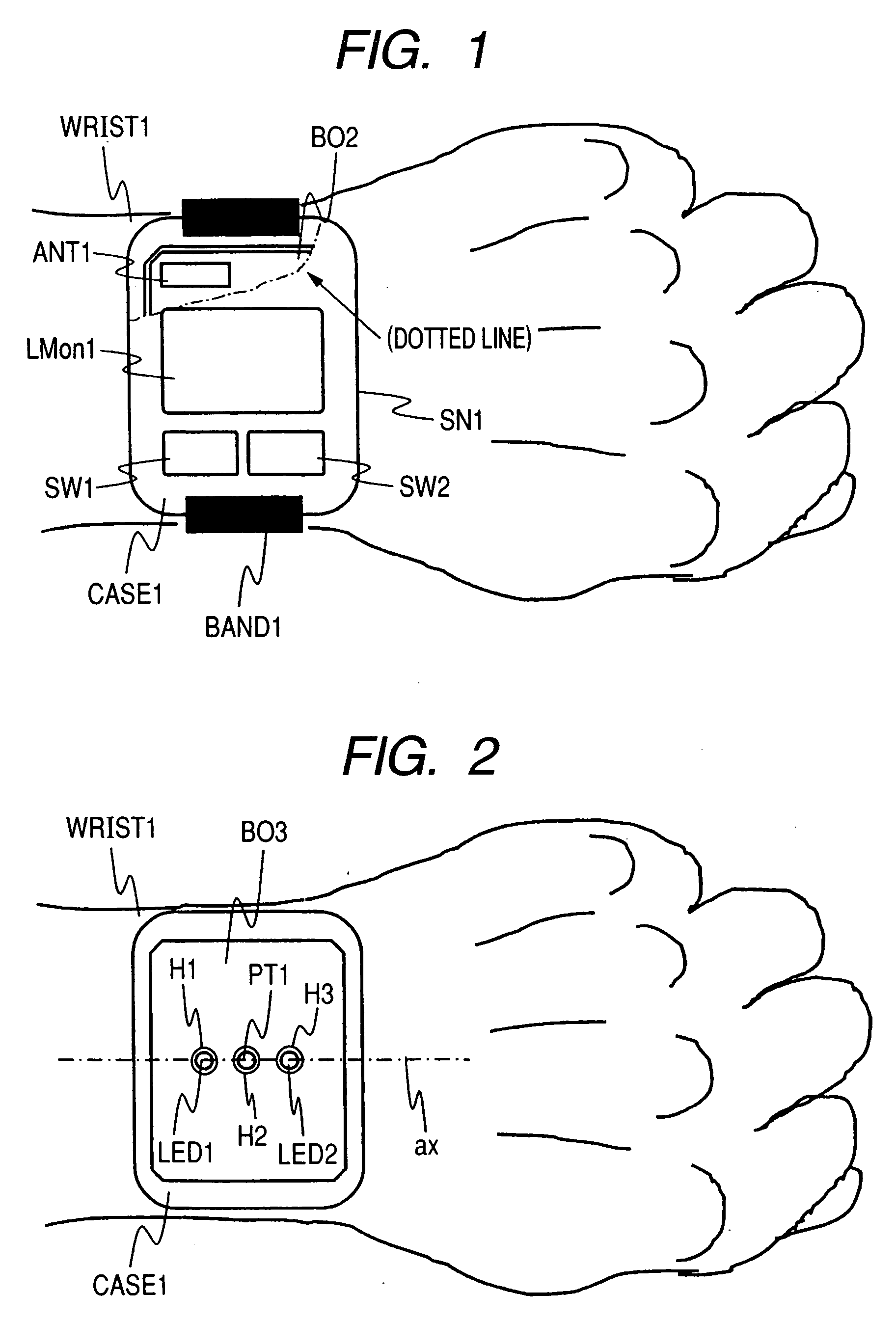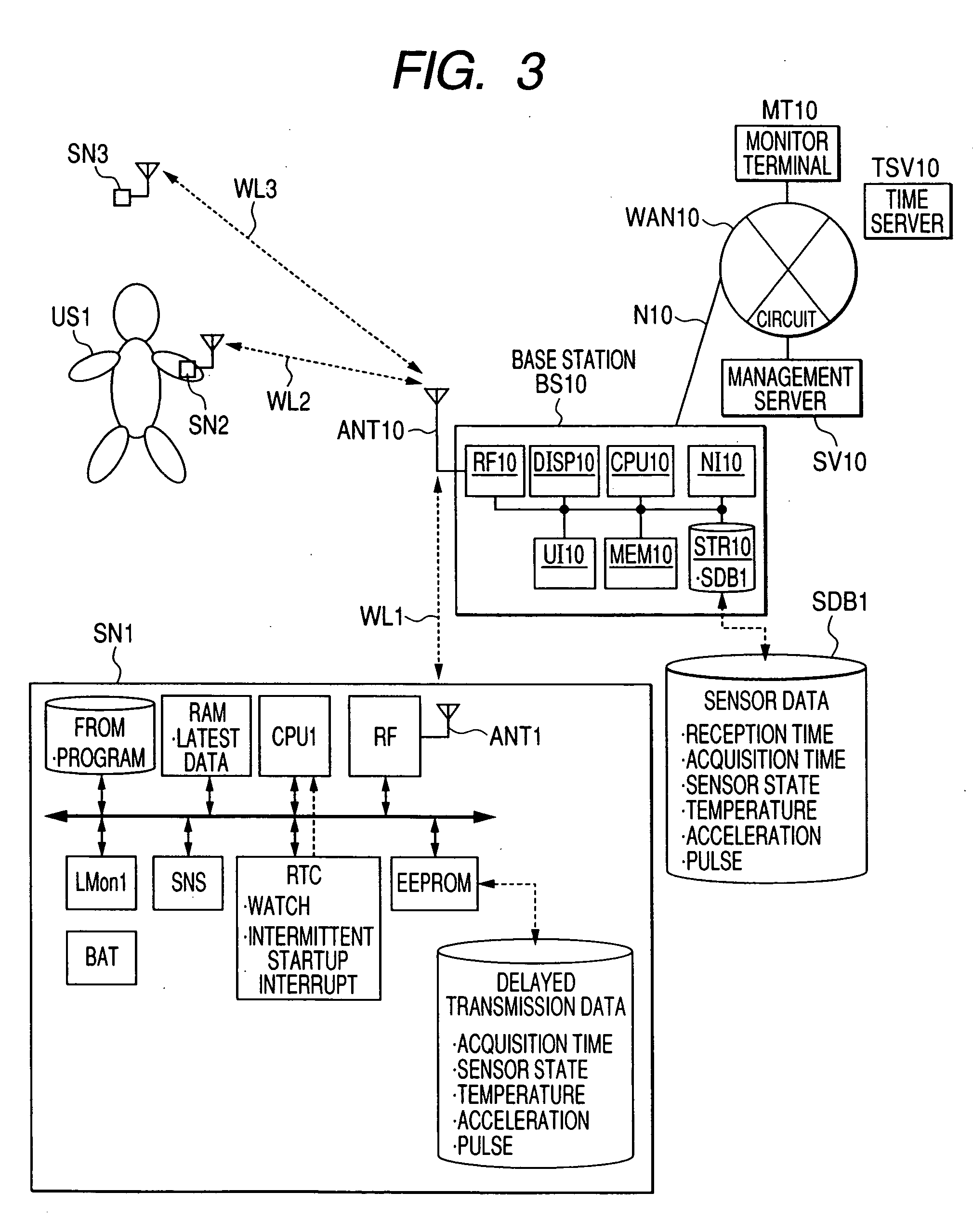Sensor node, base station, sensor network and sensing data transmission method
a sensor network and sensor node technology, applied in power management, applications, instruments, etc., can solve the problems of state of wireless communication, and not being able to transmit sensing data to the base station, so as to prevent unnecessary battery consumption in the sensor node, suppress battery consumption, and determine the quality of wireless communication state
- Summary
- Abstract
- Description
- Claims
- Application Information
AI Technical Summary
Benefits of technology
Problems solved by technology
Method used
Image
Examples
embodiment 2
[0182]FIG. 26 shows a second embodiment wherein, in a sensor network, the sensor nodes SN1-SN3 of the first embodiment are provided with a humidity sensor instead of the acceleration sensor and pulse sensor, and the temperature / humidity of the kitchen and dining room from the temperature sensor and humidity sensor are collected and managed by the base station BS10 via radio WL10-WL12. The base station BS10 is connected to a monitor PC (MT2) which displays the collected temperature and humidity, and to a database DB2 which stores the collected temperature and humidity.
[0183]In this second embodiment, the point that the sensor nodes SN1-SN3 are fixed at predetermined positions in the kitchen and dining room is different from the first embodiment. Also, devices (microwave range, etc.) which use the same wavelength as the wireless communication frequency of the sensor nodes SN1-SN3 and the base station BS10 are installed in the kitchen, and the wireless communication state of the sensor...
PUM
 Login to View More
Login to View More Abstract
Description
Claims
Application Information
 Login to View More
Login to View More - R&D
- Intellectual Property
- Life Sciences
- Materials
- Tech Scout
- Unparalleled Data Quality
- Higher Quality Content
- 60% Fewer Hallucinations
Browse by: Latest US Patents, China's latest patents, Technical Efficacy Thesaurus, Application Domain, Technology Topic, Popular Technical Reports.
© 2025 PatSnap. All rights reserved.Legal|Privacy policy|Modern Slavery Act Transparency Statement|Sitemap|About US| Contact US: help@patsnap.com



